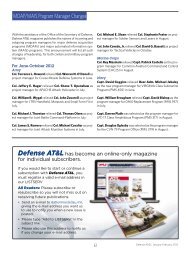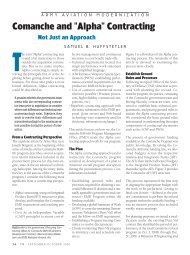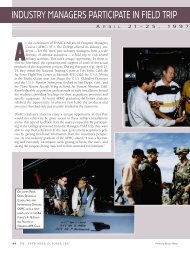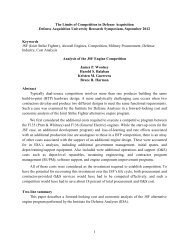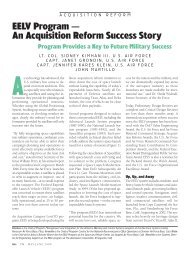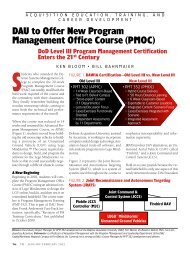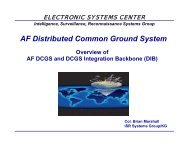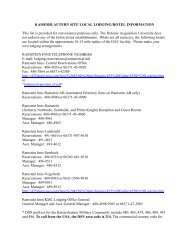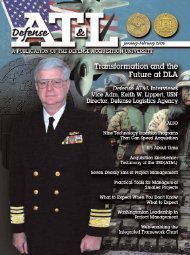Defense ARJ - Defense Acquisition University
Defense ARJ - Defense Acquisition University
Defense ARJ - Defense Acquisition University
Create successful ePaper yourself
Turn your PDF publications into a flip-book with our unique Google optimized e-Paper software.
<strong>Defense</strong> <strong>Acquisition</strong> Review Journal<br />
chain costs. The purpose of this initiative is to improve the operational availability<br />
and readiness of weapon systems life cycles at a decreased cost by using improved<br />
maintenance capabilities and integrated logistics and business processes (FLE, n.d.).<br />
Total Life Cycle Systems Management (TLCSM). Weapon systems sustainment<br />
uses 80 percent of DoD logistics resources or approximately $64 billion annually<br />
(Cothran, Fowler, & Kratz, 2002). DoD is changing to a performance-based weapon<br />
systems sustainment model to achieve weapon systems performance integration<br />
across government and industry. The program manager (PM) manages and is accountable<br />
for the development of the weapon system and is responsible for meeting<br />
cost, schedule, and performance factors while considering the various and changing<br />
warfighter performance requirements in this process. Former Assistant Deputy Under<br />
Secretary of <strong>Defense</strong> for Logistics Plans and Programs Louis Kratz, stated:<br />
198<br />
One of the fundamental tenets of performance-based logistics is the<br />
acquiring of weapon system support as an integrated package based<br />
on objective outcomes, such as system availability. The objective<br />
outcomes—or operational performance requirements of the customer—will<br />
be documented in a formal performance agreement document,<br />
negotiated across all stakeholders, consistent with the Services’<br />
corporate structure. The performance agreement defines system<br />
performance expectations (and corresponding support required),<br />
resources required to provide that level of performance, commitment<br />
to provide those resources, and signature by appropriate stakeholders<br />
(p. 51).<br />
End-to-End Distribution. The purpose of this initiative is to enhance the flow<br />
of materiel to the end user, while at the same time, synchronizing deployment and<br />
sustainment efforts into an integrated, end-to-end distribution system (Staff Feature,<br />
2003).<br />
Executive Agents (EA). The purpose of this initiative is to ensure that EA designations<br />
match warfighter requirements with the National <strong>Defense</strong> Strategy by supporting<br />
the warfighter “across the full spectrum of operations/including support on an<br />
end-to-end basis and rapid response to all deployments” (p. 3).<br />
Enterprise Integration. The purpose of this initiative is to unite information<br />
technologies in order to implement new logistics business processes.<br />
None of these six initiatives can function by itself. Each initiative helps the other<br />
five initiatives by building an integrated logistics enterprise.<br />
Kratz stated that “the most powerful weapon in the world is useless if we can’t<br />
deploy and use it effectively” (Cothran, Fowler, & Kratz, 2002, p. 50). Logistics<br />
transformation serves the warfighter threefold: (a) to adopt the best business practices,<br />
(b) to have a logistics system open architecture so decision makers can use



